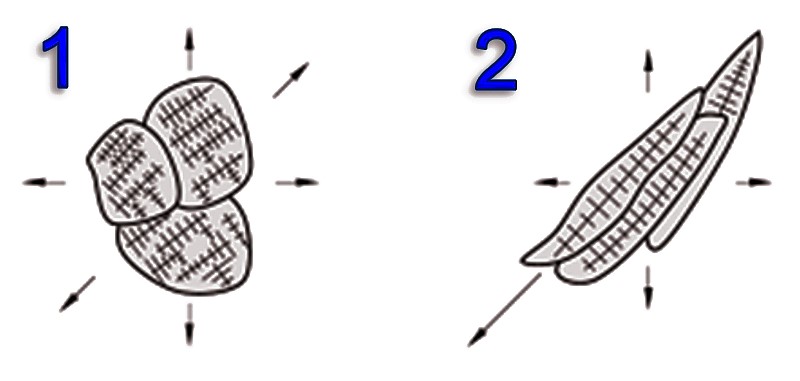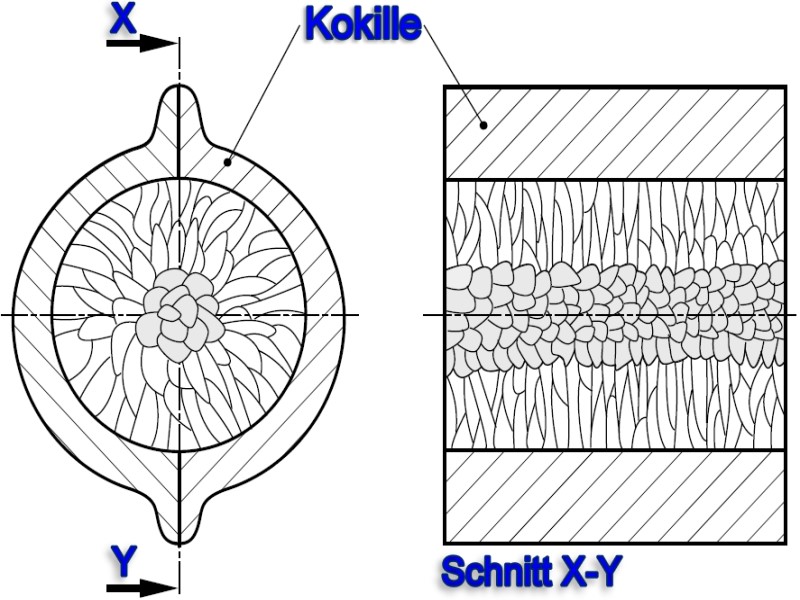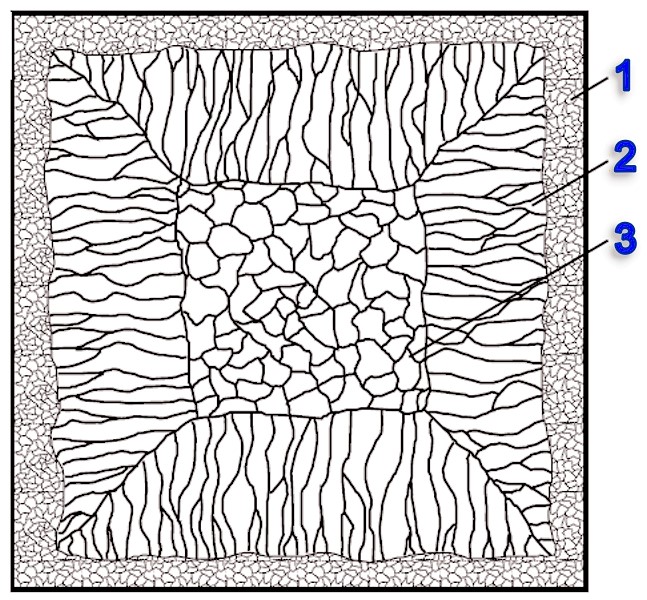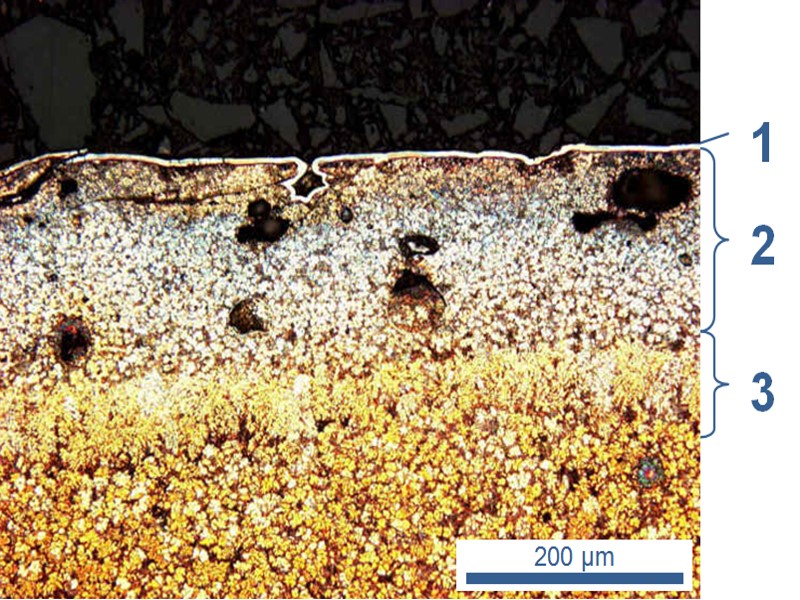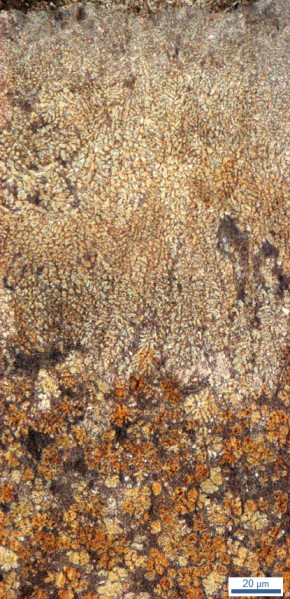Columnar crystal
Crystal form in the casting structure. Especially in case of cubically hardening metals, crystal (see also crystallite) predominantly grows quickly in preferred directions (vertically to the cube face), in other directions it grows more slowly. The resulting structure is described as dendrites whose crystallization conditions and solidification morphology mainly depend on cooling conditions.
If a melt predominantly cools evenly, round “equiaxed” grains develop which are called globulites. Stem and/or column-shaped or prismatic crystals develop if crystals prefer to grow on one side growing more slowly but mainly evenly in the other two directions. In case of uneven (directional) heat dissipation, especially long crystallites develop in the opposite direction of the heat flow. (Fig. 1).
Fig. 2 illustrates the section of a cast bar-shaped die component. A needle or stem-shaped crystal form starting at the mold can be recognized. This is directed into the opposite heat flow direction. This way, most impurities build on the the remaining melt so that it solidifies globularly with a great number of nuclei .
Needle structures and columnar crystals are observed at castings with an average cooling rate. A block illustration according to S. Engler can be used for interpreting casting development which contains an outer globulite zone, columnar crystals in internal globulites (Bild 3). The classic nucleation theory is used for explaining the outer globulite area: The molding material draws heat from liquid metal when it is poured into the cold mold so that there are supercoolings at the mold wall which result in nucleation. Due to the mold wall and foreign particles floating in the melt, an increasing number of nuclei develops heterogeneously which turn into round-shaped crystals (1 in Fig. 3) whereas supercooling is removed by released solidification heat and growth is slowed down. The subsequent columnar crystalgrowth (2 in Fig. 3) can be explained by growth interpretation: Crystals which are favorably oriented to the heat flow and horizontally to the mold wall can continue to grow into the block, the remaining crystals prevent each other from growing. According to S. Engler, several theories are on offer for interior globulite zone development (3 in Fig. 3) (see Casting structure):
- The constitutional supercooling and heterogenous nucleation before the solidification front and/or
- Crystal and/or crystal fragment transportation from the outer casting areas to the interior.
Additional references:
Solidification
Solidification morphology
Solidification type
Directional solidification
Monocrystal
Solid solution
Interstitial solid solution
Substitutional solid solution
Literature references:
Fritz A., Schulze G.: Fertigungstechnik, Springer-Verlag Berlin Heidelberg, 2008.
